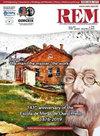地层坐标的使用如何改善品位估计
Q3 Earth and Planetary Sciences
引用次数: 2
摘要
有些矿床呈层状矿化。这些层可能经历几个后续的地质事件,如褶皱和/或严重的侵蚀过程。这些矿床中的品位往往沿着矿化最初沉积的方向或沿着同一地质时期(地层水平)相关联。因此,在地理坐标方面彼此接近的一些地点可以显示不相关的等级。空间连续性分析也会受到不同地层组合样品所造成的误差的影响。本文采用坐标变换(展开)对同一层位测得的等级进行了对齐。坐标的修改改进了空间连续性建模和非采样位置的坡度估计。结果表明,利用展开法得到的样本估价值与真实值的相对误差均值为-0.10%。而使用原始坐标时,相对误差均值为-0.65%。此外,使用地层坐标进行交叉验证时,实测值与估计值之间的相关性更大。一个完整的锰矿床案例研究说明了该方法。本文章由计算机程序翻译,如有差异,请以英文原文为准。
How the use of stratigraphic coordinates improves grade estimation
Some mineral deposits show mineralization along layers. These layers may pass through several subsequent geological events such as folding and/or severe erosional processes. Grades within these deposits tend to be correlated along orientations where the mineralization was originally deposited or along the same geological period (stratigraphic level). Consequently, some locations close to each other in terms of geographical coordinates can show uncorrelated grades. Spatial continuity analysis can also be affected by error inflicted by combining samples from different stratigraphic levels. This article uses the coordinate transformation (unfolding) to align the grades measured along the same stratigraphic level. The modification in coordinates improved the spatial continuity modeling and the grade estimates at non-sampled locations. The results showed that the mean of the relative error between the estimated value and the real value of the samples using unfolding is -0.10%. However, when using the original coordinates, the mean of the relative error is -0.65%. Furthermore, the correlation between the real and estimated value using crossvalidation is greater using stratigraphic coordinates. A complete case study in a manganese deposit illustrates the methodology.
求助全文
通过发布文献求助,成功后即可免费获取论文全文。
去求助
来源期刊

Rem-Revista Escola De Minas
工程技术-工程:土木
自引率
0.00%
发文量
0
审稿时长
6-12 weeks
期刊介绍:
REM – International Engineering Journal (antigua REM – Revista Escola de Minas) es la primera revista técnica de Sudamérica. Fue fundada en enero de 1936 por los estudiantes de la Escuela de Minas de Ouro Preto y desde entonces se ha especializado en la publicación de artículos en las áreas de la Ingeniería Civil, Geología, Metalurgia y Materiales y, Minería y Mecánica y Energía.
Su objetivo es servir como un medio de publicación para los trabajos técnicos y científicos originales de investigadores nacionales y extranjeros en esas áreas. Contribuciones originales (artículos y cartas) son aceptadas. Artículos de revisión dependen de la invitación y/o análisis de los Editores.
El envío de artículos para su publicación implica que el trabajo no ha sido publicado previamente, que no está siendo presentado para su publicación en otra revista y no se publicará en otro lugar, en la misma forma, sin el permiso, por escrito, de los Editores/Autores.
 求助内容:
求助内容: 应助结果提醒方式:
应助结果提醒方式:


